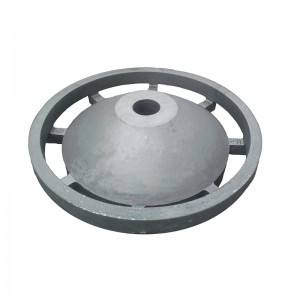- Afrikaans
- Albanian
- Amharic
- Arabic
- Armenian
- Azerbaijani
- Basque
- Belarusian
- Bengali
- Bosnian
- Bulgarian
- Catalan
- Cebuano
- China
- China (Taiwan)
- Corsican
- Croatian
- Czech
- Danish
- Dutch
- English
- Esperanto
- Estonian
- Finnish
- French
- Frisian
- Galician
- Georgian
- German
- Greek
- Gujarati
- Haitian Creole
- hausa
- hawaiian
- Hebrew
- Hindi
- Miao
- Hungarian
- Icelandic
- igbo
- Indonesian
- irish
- Italian
- Japanese
- Javanese
- Kannada
- kazakh
- Khmer
- Rwandese
- Korean
- Kurdish
- Kyrgyz
- Lao
- Latin
- Latvian
- Lithuanian
- Luxembourgish
- Macedonian
- Malgashi
- Malay
- Malayalam
- Maltese
- Maori
- Marathi
- Mongolian
- Myanmar
- Nepali
- Norwegian
- Norwegian
- Occitan
- Pashto
- Persian
- Polish
- Portuguese
- Punjabi
- Romanian
- Russian
- Samoan
- Scottish Gaelic
- Serbian
- Sesotho
- Shona
- Sindhi
- Sinhala
- Slovak
- Slovenian
- Somali
- Spanish
- Sundanese
- Swahili
- Swedish
- Tagalog
- Tajik
- Tamil
- Tatar
- Telugu
- Thai
- Turkish
- Turkmen
- Ukrainian
- Urdu
- Uighur
- Uzbek
- Vietnamese
- Welsh
- Bantu
- Yiddish
- Yoruba
- Zulu
Aug . 31, 2024 18:57 Back to list
ductile iron water main
The Importance of Ductile Iron Water Mains
Ductile iron, a modern evolution of gray iron, has become a pivotal material in the construction of water mains across urban infrastructures worldwide. Due to its high strength, corrosion resistance, and durability, ductile iron water mains are increasingly favored for both new installations and the repair of aging water systems. This article explores the critical role that ductile iron plays in the water supply industry, its advantages, and the advancements in technology that enhance its application.
Water is an essential resource for any community, and the infrastructure responsible for delivering this precious commodity must be robust and reliable. Traditional materials such as cast iron and PVC have served well in the past; however, they often face challenges related to strength, brittleness, and susceptibility to environmental factors. Ductile iron, formed through a unique alloying process that adds small amounts of carbon and alloying elements, displays superior tensile strength and ductility compared to its predecessors, making it an ideal choice for high-pressure water distribution systems.
One of the significant advantages of ductile iron water mains is their ability to withstand the rigors of varied environmental conditions. These pipes are designed to endure both internal pressure from flowing water as well as external loads from soil and traffic above. This duality of strength minimizes the risk of ruptures and leaks, which can lead to costly water loss and infrastructure damage. Moreover, ductile iron is inherently resistant to corrosion, especially when combined with protective coatings, making it suitable for installation in diverse environments, including those with aggressive soils or high salinity.
ductile iron water main

Another vital attribute of ductile iron is its flexibility, which allows for easier installation and adaptation to the existing underground topology. Traditional materials often require rigid installations that can lead to complications when faced with ground movement or shifting landscapes. In contrast, ductile iron pipes can absorb movements without fracturing, facilitating longer spans between fittings and reducing the overall number of joints required. This characteristic not only accelerates the installation process but also enhances the long-term integrity of the water mains.
In terms of longevity, ductile iron water mains have proven to have an extended service life, often exceeding 100 years with proper maintenance. This durability translates into lower lifetime costs for municipalities, as the need for frequent replacements is significantly reduced. The reliability of these systems is paramount, especially as many cities grapple with aging infrastructure, which increasingly fails to meet modern demands.
Moreover, advancements in manufacturing and installation techniques are further enhancing the performance of ductile iron water mains. Technologies such as trenchless installation methods allow municipalities to replace outdated piping with minimal disruption to surface activities. This not only reduces the impact on daily life but also lowers the costs associated with road repairs and detours.
In summary, the use of ductile iron for water mains represents a proactive approach towards modern water management. Its superior strength, flexibility, and resistance to corrosion make it a quintessential choice for sustainable urban development. As communities continue to grow and evolve, the reliance on durable materials like ductile iron will be vital in ensuring that the supply of clean water remains uninterrupted and efficient. Embracing this material paves the way for a more resilient infrastructure, capable of meeting the challenges of today and the demands of tomorrow.
-
Premium Cast Iron Water Main Pipe: Durable, Corrosion-Resistant
NewsAug.03,2025
-
Durable Cast Iron Water Mains | AI-Optimized Systems
NewsAug.02,2025
-
High-Efficiency Propane Boiler for Baseboard Heat | Save Energy
NewsAug.01,2025
-
Premium Source Suppliers for Various Gray Iron Castings
NewsJul.31,2025
-
Durable Cast Iron Water Main Pipes | Long-Lasting
NewsJul.31,2025
-
High-Quality Cast Iron Water Main Pipe for Durable Infrastructure
NewsJul.30,2025


